Features
Form design mode
A “design mode” user interface (UI) is now available to create and edit custom data entry forms.

Creating forms still requires that a table already exists, but the design of the form should be more intuitive.
It is also possible to make changes to the form definition while filling out a form for testing purposes. If you need to make a change to the form after populating the 30th field, you can switch to design mode, make the change to the form definition, then return to testing out the form without having to re-enter the 30 values.
It is still possible to export and edit form definitions in a spreadsheet for those who need to export and import forms from one mart/environment to another and for those who prefer to edit form definitions this way.


Finally, in design mode, you can view the underlying JSON data of the record by expanding the “Debugging info” section:
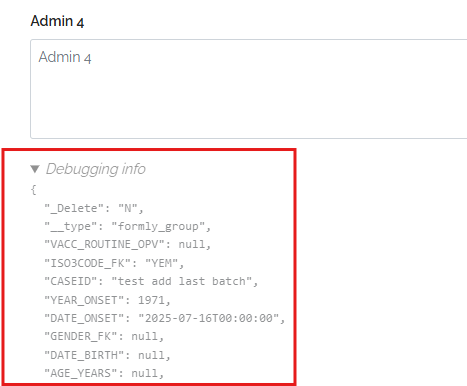
Please see the updated how-to article on custom data entry forms to learn how to create forms.
Visually compare records from a table
Visually compare 2 or more records from a table using the new “Compare Rows” button.

By default, only differences between the rows are shown. Uncheck “Only differences” to view all fields.

There is no hard limit on the number of rows that can be compared.
Export 1 worksheet per distinct value
You can export data to Excel with 1 worksheet created per distinct value in a column. If the export format is csv, a zip file with 1 csv file per distinct value is created.
For example, export 1 worksheet per ISO 3 code. Please note that this format is not ideal for editing (at upload time you will be asked to choose only a single worksheet).
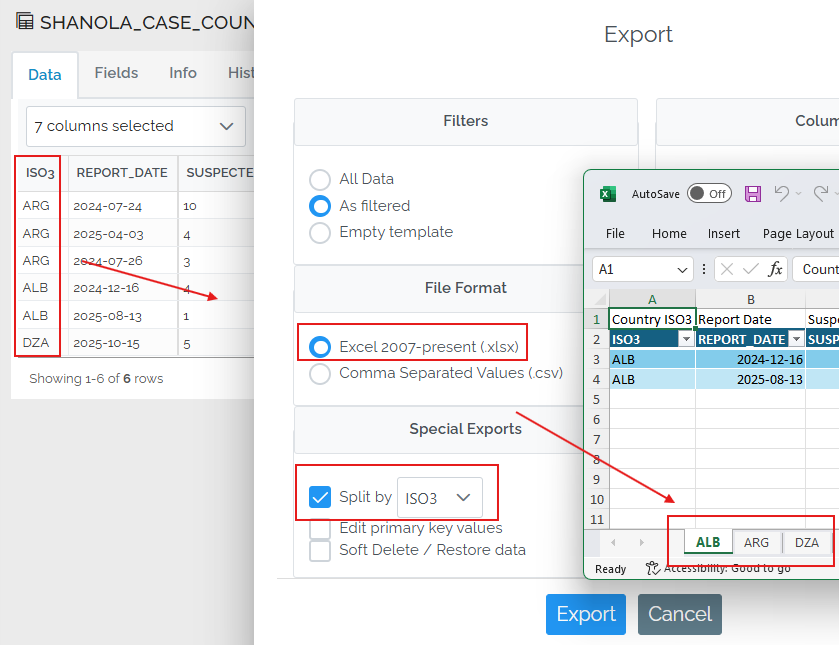
Exporting the same data as 1 csv file per ISO 3 code:
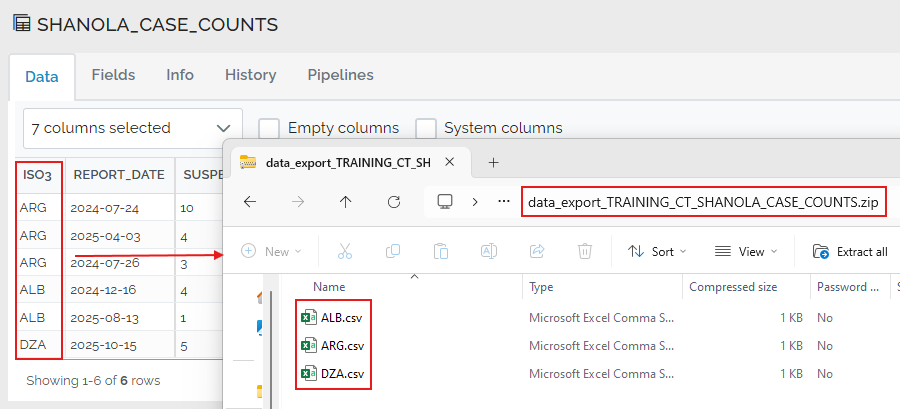
Data dictionary for custom views
It is now possible to provide column descriptions of custom SQL views. Column descriptions are available on the “Fields” tab of a table/view in the data catalog.
Editing descriptions of custom SQL views in the Model area:
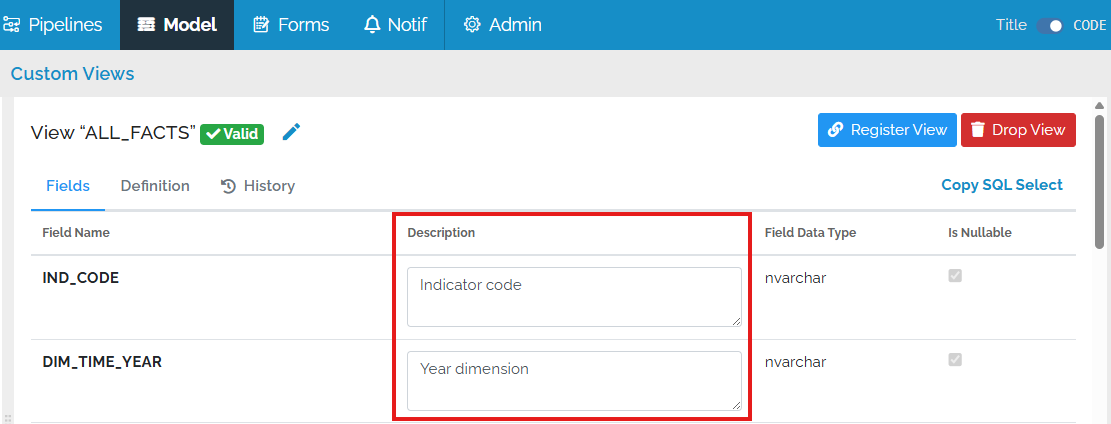
Viewing descriptions of custom SQL views in the Data catalog:
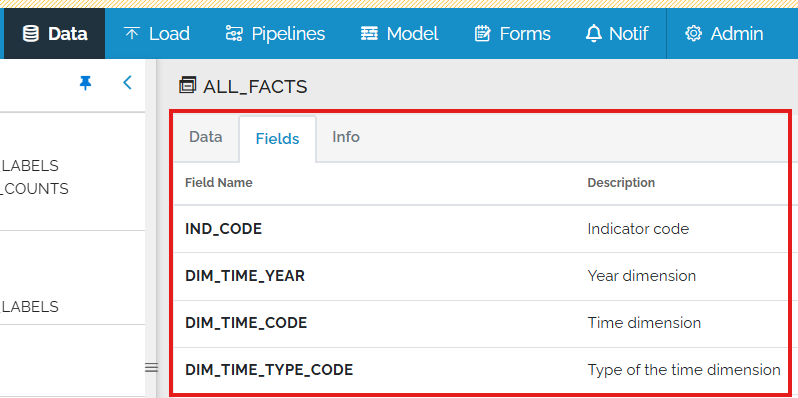
Enhancements
Data catalog object browser
Browsing the data catalog has become easier with a new collapsible “object browser” that allows you to quickly select a different table/view without leaving the page:
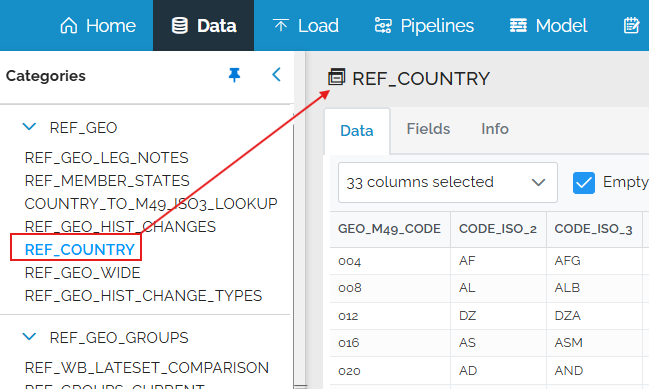
The panel can be pinned open or allowed to auto-collapse. Just put your mouse over it to open it:
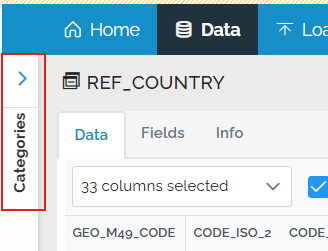
Data page tabs
While viewing a table or view, without leaving that page, you can access an object’s data dictionary (“Fields” tab), basic info (“Info” tab), batch history (“History” tab, only relevant for tables) and related pipelines (“Pipelines” tab). Put your mouse over any field or label to understand what it means. For example, the “Date updated” line on the Info tab provides the timestamp of the last data update of the table/view.
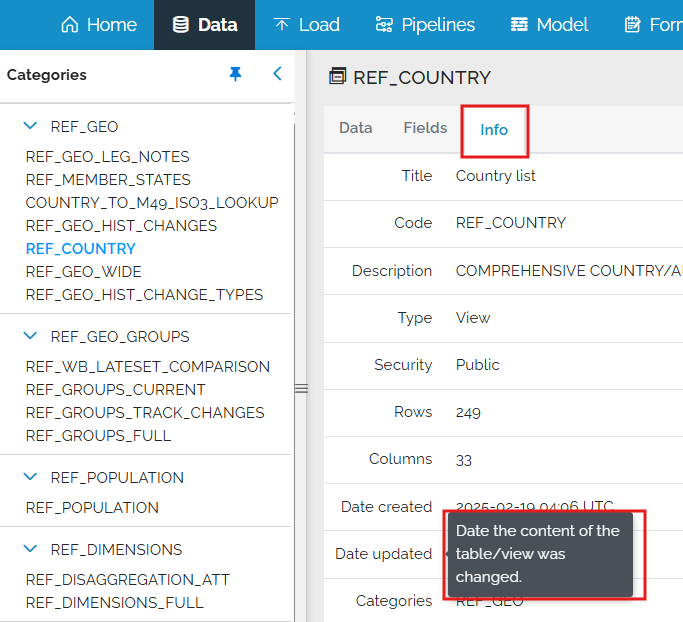
Improved data view history tab section headers
The history tab of a table in the data catalog has been improved to show change summaries as badges for each batch:
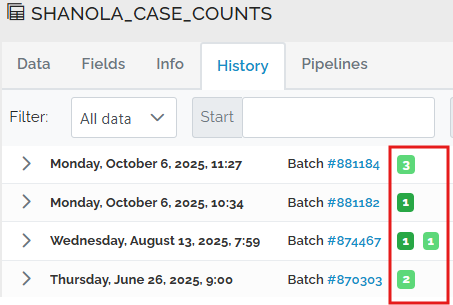
MEDIAN() and STRING_AGG() added to AggregateTable
In a pipeline, MEDIAN() and STRING_AGG() functions have been added to the AggregateTable command.
DateAdd can add values from a column
A new ValueToAddFromColumn property has been added to the [DateAdd command]((../../pipeline-script-guide#DateAdd) so that the value which is added to a date value comes from another column. It is also possible to define both ValueToAdd (a literal integer) and ValueToAddFromColumn (value from a column), in which case, both are added (or subtracted if negative).
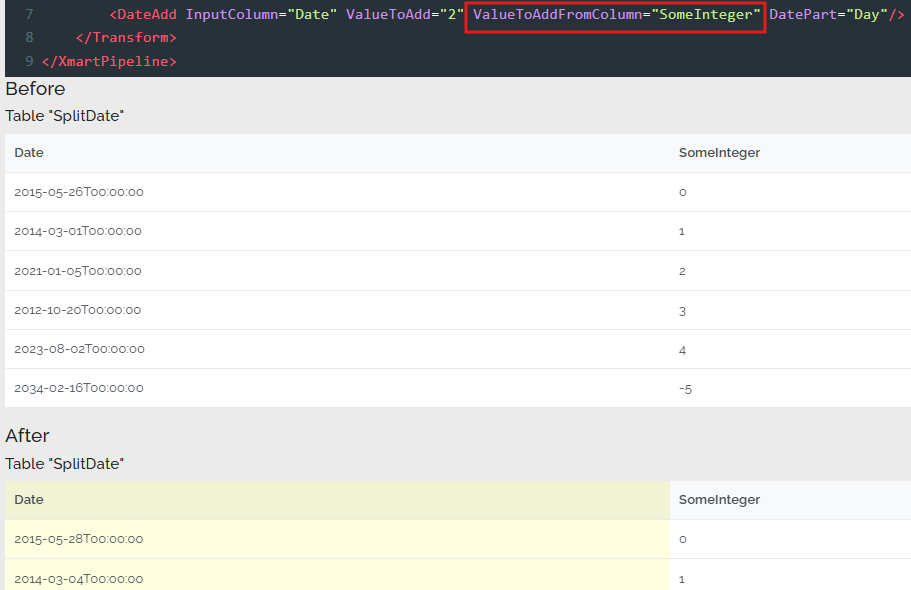
Default input variable value
A default value for a pipeline input variable can now be defined. The data loader is still prompted but the default value will automatically be selected/entered.

Only show columns with changes on data view history tab by default
On the batch history tab of a table, if there were only updates, only columns with changed values plus the primary keys are shown. You can still select other columns using the column chooser:
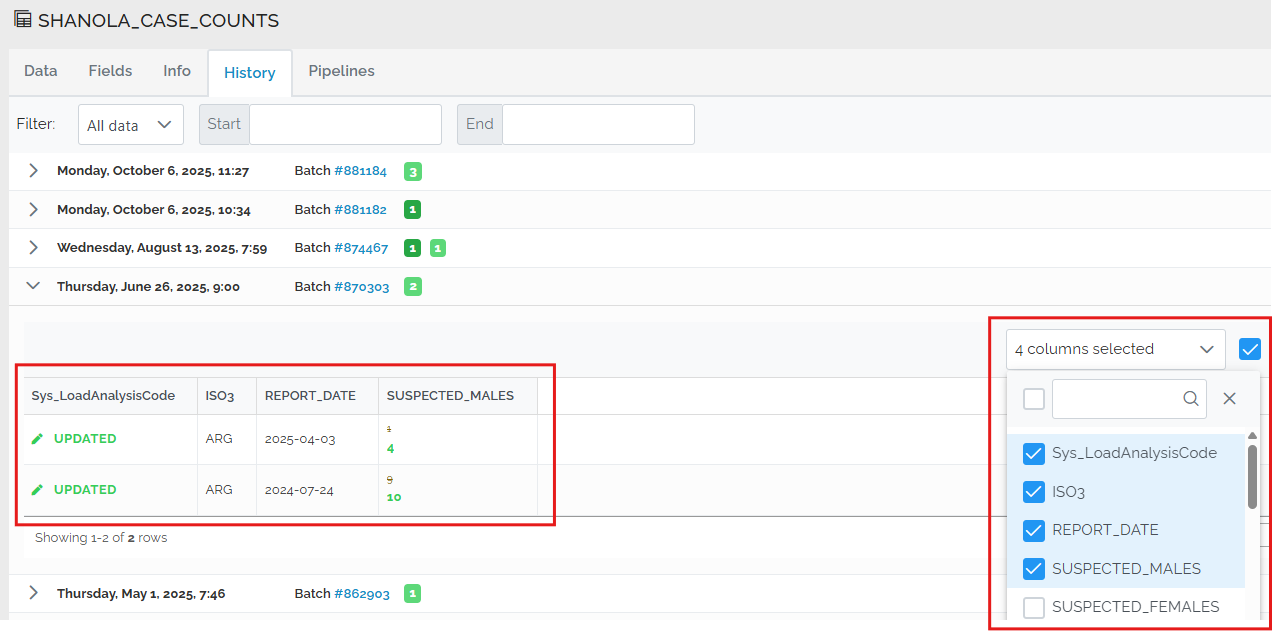
Forms search bar
A search bar has been added to the Forms page
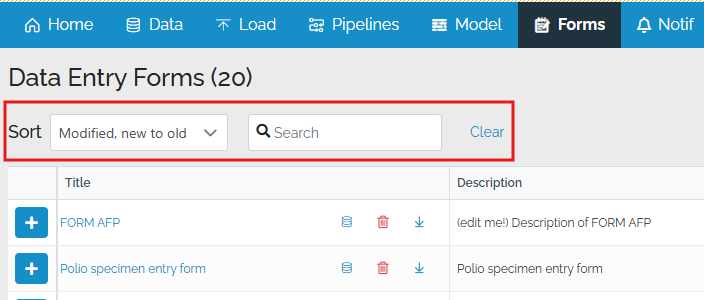
API button reflects column choices
Pressing the API button on any object’s data page will produce an OData URL that reflects the column choices in the user interface.
Search child batches in batch history
You can optionally include data flow child batches in the batch history
Initial PostgreSQL database support
Currently xMart stores mart data in an SQL Server database. It’s a work in progress but we have added initial support to store mart data in a PostgreSQL database. We expect that it will be possible to choose, per mart, whether data is stored in SQL Server or PostgreSQL and that it will be possible to export from one and import into the other.
Other changes
- #5013 Duplicates prevented on new subforms’ entries
- #5721 Improve Tag for text overflow issues
- #5703 Wrap Column Title on Forms / Data
- #5664 Display SQL error rather than generic message in SQL Editor
- #5606 Switch to PAT authentication in Snowflake provider
- #5759 Dates with format dd/MM/yyyy from CSV cannot be parsed
- #5765 Fix xmart-api tests not finding any tests in the github action
- #5775 Using field of type DATE_TIME as MartLookup result column returns weird format.
- #5746 Column count doesn’t update after a new column is added
- #5764 Mart deploy not very reliable to display created child batches
- #5725 Custom View tab Statuses Not Updating Correctly
- #5706 Data view TEXT_MAX expand popup bad display in new table mode
- #5735 PostRun tab disappears if you move from Child to Parent
- #5750 Out of sync column visibility and console warnings in Mart Catalog
- #5692 History tab produces 500 error
- #5751 Request blocked by WAF in UAT public relay
- #5754 Batch issue query uses a row limiting operator (‘Skip’/’Take’) without an ‘OrderBy’ operator.
- #5708 Do we need these staging table indexes if the strategy is replace?
- #5704 Should not compute sys_rowtitle for this table
- #5763 Table header misaligned in Data View in Old mode
- #5635 Internal Server Error when trying to filter Column named “Count” in Data View
- #5768 User cannot see all marts in the Global Admins > Users page
- #4714 Custom Views - History Version Compare width overflow
- #5420 Add Individual User asks for Email Address again
- #5737 Custom View History not updating
- #5717 “[${template.APP_URL}]” Text appears at bottom of Approval Notification email
- #3386 Azure Relay datalake cache: handle model batches (more granularly)
- #5662 Can’t findStartingRow=”SHA” in Russian Excel file
- #5741 InsertRecordToSoftDeleteNotInSourceActionByRecordID not handling foreign keys correctly
- #5736 Weird batch critical errors, rerun flow a non flow batch + can’t download file
- #5716 Many OData binding exceptions in event viewer
